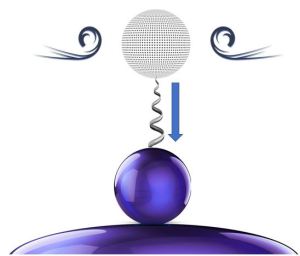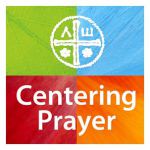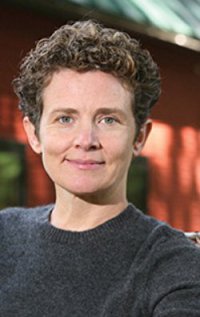From the Law of One, Ra mentions several times about the importance of silence, the contemplative mind, and right use of intention in order to see more clearly and be more who we are: the Infinite Creator. In our current world situation we find ourselves in the Great Shifting. In the most macro sense, this is the shift from the 3rd density to the 4th density. Included in that shift are all the heaps of changes and confluences happening as humanity deals with our collective shadow and our individual shadows. Though it is attractive to think about all of the hidden technologies that may be released during the course of the Shifting, we must make ourselves ready to handle such newness. If our consciousness awareness is still dualistic, then no real freedom will be had. Freedom to be our egos is not freedom at all!
This is also true for how we deal with learning about the crimes against humanity and the negative’s agenda(s) for thousands of years. Restorative justice will not even be possible if we approach the truths with dualist minds. We will just continue operating with some level of retributive justice and this will keep us trapped right in our lower three chakras–both collectively and individually. Do we want 4th density to come? Are we in an advent of sorts, longing for the New Earth? Then we better get ready for the nitty gritty work of looking inside and seeing where we, as individuals, are mired in the muck. Where is the way out? While removing entity attachments, esoteric knowledge, knowing our astrological origins, rituals, etc, all can help, they are secondary to learning how to surrender to the now, in the silencing of the mind, and connecting with our Source in darkness and no-thingness of union with Infinity.
In meditative practices there are two kinds of approaches: Apophatic (releasing of thoughts, images, and mind-processes) and Kataphatic (spiritual imagery, dialogs with guides, angelics, higher selves, astral travel, etc). You don’t have to remember those fancy words but the trajectories of the approaches are important to consider. Both the apophatic and kataphatic are needed for a robust spiritual development. They are the stuff of the higher chakras, higher inner planes, and higher densities.
Yet, in all of the great spiritual traditions of the world, there has always been the wisdom that the apophatic way must be learned first and is primary; that there is a preferential option for silencing. The apophatic way allows us to move through the levels of awareness while the kataphatic way is like getting out of the apophatic elevator and exploring a particular floor. Have you ever known people who may be very gifted at energy work, astral travel, etc, but you are surprised at how dualistic their thinking still is? I sure have. This is why we as a collective need to learn how to adopt some form of contemplative practice. And there are many kinds!!!
Ra does not make any recommendation as to which to adopt, but they do invite us to adopt one that works for us, personally. With your permission, I will express an approach that has worked for thousands of people, including myself. The following is an exploration of what is known as Centering Prayer. It is super easy and very demanding, at the same time. But after exploring different meditative practices for years, I have found a home.
In my admittedly subjective opinion, the practice of Centering Prayer is one of the greatest practices to help us learn how to be more fully awake and enjoy life in abundance. In this article, we will see how Centering Prayer can help us drop down into our True Self, what I call the Anchored Self, and from there, enjoy a more centered sense of being that can interface with reality enjoying higher levels of joy, thankfulness, effectiveness, and discernment.
What is the Anchored Self?
The Anchored Self is your True Self. It is who you really are and have always been. Finding our Anchored Self is not about achieving some high level of private morality but rather it is about awakening more and more to who you already are. It feels like no-thing because it is not defined by external validations or wounds. It is unwoundable because it is radically (radius=roots)
 The Anchored Self is already in union with the Infinite Creator. They are One.
The Anchored Self is already in union with the Infinite Creator. They are One.
secure in the Infinite Creator’s own divine essence.
Some people have never had much more than a glimpse of their Anchored Selves as they continually seek ways to fill the voids through addictions and addictive thinking patterns. Most people do, indeed, experience their Anchored Self but do not live from there on a regular basis. A small minority have found the Pearl of Great Price and operate in the world with a palatable wholeness and ontological security. These people live surrendered lives of thanksgiving. They are humble, gracious, and possess great equanimity.
The great goal and purpose in our lives is to learn how to more and more embody the Anchored Self and use the Floating Self to do good in the world. There will be our dance between the two Selves but if we listen well to our great sufferings and our great loves, then we become real leaven for the collective good. We become more fully to that which we already are: Logo’s Body on Earth.
What is the Floating Self?
The Floating Self is our False Self. It is not the bad self and we do not need to demonize it. It is the self to which we are attached especially in terms of our image that we want to project for others to see. I am smart, I am attractive, I am successful, I am liked, I am holy, or I am stupid, I am ugly, I am despised, I am unworthy–these are examples of the Floating Self’s jostling around in the winds of the emotions of the day. The Floating Self is the egoic self and often takes offense or feels the need to defend itself. It is inherently dualistic and strips everything  down to binary choices, and then creates the illusion that we have to pick one of them.
down to binary choices, and then creates the illusion that we have to pick one of them.
Although I said that the Floating Self is not bad, I do want to state that it is dangerous if that is the only self we know. We can achieve high success, have doctorates and be experts in areas, and still be living almost entirely from our Floating Selves. Head knowledge is not nearly as valuable as gnosis, or lived knowing based on experience.
When St. Paul speaks about the need to die to the flesh, most of us have interpreted him to mean that body, and its needs, are evil, coarse, and something to avoid or see as shameful. Instead, St. Paul was using his own word, “sarx,” for what we are calling the Floating Self. That is what needs to die to its importance, its need for recognition, its need for instant gratification. Learning how to die daily (sometimes, moment by moment) to the Floating Self’s neediness is how we “rise” in our Anchored Self, more and more. You see, the great pattern of life–what was archetypally revealed in journey of Jesus in his dying and rising–is something that is always prevalent our own lives. When you have the eyes to see this, you will see it everywhere and all the of the time in daily life. That’s when faith really gets real, personal, corporate, and transformative. Ra speaks to this exact same archetype in two pithy statements:
- 94.26 “All things in manifestation may be seen in one way or another to be offering themselves in order that transformations may take place upon the level appropriate to the action.” [note: dying=offering, rising=transformations]
- 93.24 “Thus the crux ansata (crucifixion or ankh) is intended to be seen as an image of the eternal in and through manifestation and beyond manifestation through the sacrifice and transformation of that which is manifest.” [note: dying=sacrifice (to make holy through self-offering); rising=transformation of that which is manifest]
Wholeness and Holiness
The Floating Self, believe it or not, actually becomes our greatest teacher in our lives. As Psalm 51:3 admits, “My sin is ever before me.” When we live from our Floating Selves, we are living in a disconnected way apart from our ground of being. In this illusion of separation, which feels so real when we are caught up in its drama, we miss the mark (“hamartano”, Greek for “sin”) of staying in alignment with the Source of our Anchored Selves, the Infinite Creator.
However, when we can catch ourselves in the act of living out from our Floating Self, we mindfully witness what is going on, and then we can better handle the tension of the moment without needing to immediately judge and critique it. By falling down into our Anchored Selves, we enter the field of wholeness–and the luminosity of wholeness naturally lends itself to clarifying a path of holiness. I’m not saying that Anchored Self people do not miss the mark  from time to time, for to err is human. However, there won’t be much lag time before recognition of our hurtful or harmful actions or thought processes. We catch ourselves in the middle of the act and then surrender. And that makes all of the difference.
from time to time, for to err is human. However, there won’t be much lag time before recognition of our hurtful or harmful actions or thought processes. We catch ourselves in the middle of the act and then surrender. And that makes all of the difference.
What brings us down into our Anchored Selves is Great Love and Great Suffering. These are two things that crack the Floating Self’s dualistic lens of viewing reality so that the light of possibilities and hope can shine through (as Leonard Cohen pinned, “There’s a crack in everything/ that’s how the light gets in.”) Great Love is defined as those moments of life that fill us with such awe, wonder, and fascination that we are perplexed into attraction for the source of such delights. This opens us up. Great Suffering can be specific crucifixions or less intense daily struggles. Either way, the telltale sign of suffering is when we feel powerless to change it.
Great Love and Great Suffering lead us to moments of what is known as jamais vu. You have often heard of deja vu, or the experience of having had this moment before. Jamais vu is just the opposite. It is coming face to face with a totally new kind of life-experience that is unfamiliar to us. These are those moments that we recall later in life as being foundational in affirming our life’s course, or changing it. When we listen well to the jamias-vu-moments of our lives, then our Floating Selves are pulled down, tamed, by our Anchored Selves, and then used to do good in the world. You see, we don’t get rid of, kill, or eradicate our Floating Selves. We listen and learn its games and then compassionately reign it and use it to be our “canary in the cave,” signaling us on how we can intentionally engage with our environs grounded in compassion and wisdom. This is one of the greatest ways that we can allow the Logos, through our Anchored Selves, flowing into our Floating Selves, to bring living water to a thirsty world. That’s wholeness… and that’s holiness.
Chronos and Kairos: Encountering Deep Time
Another angle of understanding our Floating Selves and Anchored Selves is to relate how they experience the phenomenon of time. Our Floating Selves correspond more to chronos, chronological time. It is in tune with the linear passage of time but note well that the Floating Self is never conscious of the present moment. Its attention is trained towards the glorious and/or horrible past, or fantasizes about and/or dreads the future. The Floating Self is that self which feels anxiety and angst and the more we feel pressed, hemmed in, by the chaotic energy of these things, the more we are ensconced into our Floating Selves.
In contrast, our Anchored Self experiences the eternal present moment and pays attention to kairos. Kairos is deep time, or those moments of jaimas vu. From the spaciousness and clarity of Anchored Self embodying, we are able to see how everything in its own way belongs and we live lives of gratitude–even when we pass through difficult life-situations. We can do this because we have come to trust that after everyt death, there is always more abundant life.
The following is taken from an interview between Krista Tippet and the late Irish poet, John O’Donahue for the NPR radio program, On Being (www.onbeing.org). If you want a treat, please listen to the show which can be accessed below.
_______________________________________
“Source: https://onbeing.org/programs/john-odonohue-the-inner-landscape-of-beauty-aug2017/. The interview below is from the uncut version beginning at 27:26.
Ms. Tippett: You wrote about time, “Possibility is the secret heart of time. On its outer surface, time is vulnerable to transience. In its deeper heart, time is transfiguration.” I wonder how you are able to have — I don’t know — I think a larger sense of time, because of — as an inheritor of the Celtic tradition.
Mr. O’Donohue: Yeah, I think that’s a bit of it, that old Celtic thing, because I mean there is, in Ireland, still — even though it’s getting consumerized so fast — there is still, in the West of Ireland where I live, a sense of time, that there’s time for things, and that when God made time, he made plenty of it, and all the rest of it. And you see, I think that one of the huge difficulties in modern life is the way time has become the enemy.
Ms. Tippett: Time is a bully. We are captive to it.
Mr. O’Donohue: Totally, and I’d say seven out of every ten people who turn up in a doctor’s surgery are suffering from something stress-related. Now there are big psychological tomes written on stress, but for me, philosophically, stress is a perverted relationship to time, so that rather than being a subject of your own time, you have become its target and victim, and time has become routine. So at the end of the day, you probably haven’t had a true moment for yourself to relax in and to just be.
Meister Eckhart, whom I love, said, “So many people come to me asking how I should pray, how I should think, what I should do. And the whole time, they neglect the most important question, which is, how should I be?” And I think when you slow it down, then you find your rhythm. And when you come into rhythm, then you come into a different kind of time. Because you know the way, in this country, there’s all the different zones — I think there are these zones within us, as well. There’s surface time, which is really a rapid-fire Ferrari time.
Ms. Tippett: And over-structured.
Mr. O’Donohue: Yeah, over-structured, like, and stolen from you, thieved all the time. And then if you slip down — like Dan Siegel, my friend, does this lovely meditation. You imagine the surface of the ocean is all restless, and then you slip down deep below the surface where it’s still and where things move slower.
Ms. Tippett: So I’m assuming you would suggest that more people need to create more space and stillness, but I think what you’re also saying is that simply by thinking differently about time, by approaching it differently, by putting on a new imagination, we can have a different sense of it. Is that right?
Mr. O’Donohue: That’s absolutely right, because I think that if you take time not as calendar product, but as actually the parent or mother of presence, then you see that in the world of spirit, time behaves differently, actually. I mean when I used to be a priest, it was an amazing thing — you’d see somebody who would be dying over a week, maybe, and had lived, maybe, a hard life where they were knuckled into themselves, where they were hard and tight and unyielding, and everything had to err in its way to their center. And suddenly, then, you’d see that within three or four days you’d see them loosen. And you’d see a kind of buried beauty that they’d never allowed themselves to enjoy about themselves surface and bring a radiance to their face and spirit.
Ms. Tippett: And why did it surface then?
Mr. O’Donohue: Because suddenly, like, there was a recognition that the time was over and that their way of being could no longer help them with this and that another way of being was being invited from them, and when they yielded to it, it will become transformative. And it just means that actually, when you change time levels, that something can transform incredibly quickly.
I mean I always think that that’s the secret of change — that there are huge gestations and fermentations going on in us that we are not even aware of. And then, sometimes, when we come to a threshold, crossing over, which we need to become different, that we’ll be able to be different, because secret work has been done in us, of which we’ve had no inkling.
Ms. Tippett: And where did that work come from? Who directed that work? What is that?
Mr. O’Donohue: My suspicion would be — I can’t say who directed that work. But my suspicion is that the soul choreographs one’s biography and one’s destiny.
_____________________
Just a quick word in summary. O’Donohue ends this segment with suspecting that the soul choreographs the movement of our lives. This beautifully captures the silent and hidden work of our Anchored Selves. The Logos, in communion with our Anchored Selves, gives us the music for our brief dance upon this planet, which Fr. Richard Rohr, OFM, calls the “school of union.”
Cleaning our Lens, Expanding the View: Centering Prayer and Metanoia
Centering Prayer invites people in a way that is very efficacious into the heart of what people call the contemplative life. It is an amazing practice that is akin to putting a stick in the spokes of the obsessive-compulsive tendency of the mind that keeps our being in agitation and outwardly focused. The mind’s tendency to manufacture constant thoughts can keep us locked into our Floating Self.
What makes Center Prayer innovative within the family of meditations is that it doesn’t operate from focusing on a mantra or breathing, which are themselves, kinds of thinking. Instead, Centering Prayer recognizes that thinking is just part of our human mind and how it operates in the world. Through pushing away, or resisting, our thoughts via a mantra or breathing, we can inadvertently energize those very thoughts that may hook us in the moment or come back when we are not expecting them.
Centering Prayer gives a very simple method of releasing thinking when it comes, as it comes. A thought is anything that brings our attention to a focal point. This could be a powerful vision, the answer to a long-sought cosmic question, what is for dinner tonight, or an itch on your nose. The instruction in Centering Prayer is just to let it go. Simply open your “hand” that has its grip on the thought and let it go. This is not a resistance to the thought, but a soft acknowledging that it is there and then a releasing of it.
Centering Prayer is a pathway of return and an opening to something deeper. The work is done there, in the depths. It is based in the understanding of kenosis, or self-emptying (Philippians 2:6-7) where we do not cling to things but empty ourselves with the intention of union with the divine (see Theosis, Divinization, or “…full participation in divinity which is humankind’s true beatitude and the destiny of human life…” Aquinas, Summa Theologiae 3.1.2). It is in solidarity with the heart of all major spiritual traditions which is the “putting on the mind of the Logos” (example: 1Corinthians 2:13-16). With this mind of the Logos, we “get out of the way” through surrendering and unite ourselves with God’s own triune Selfhood. We get caught up in the very flow of the inner dance, the perichoresis, of the Infinite Creator’s inner life. [note: the inner dance=how Free Will, Love, and Light interplay in delight and pleasure in self-creating, infinitely.]
Neurologically, there are some very interesting things that happen, too. When we move from fixation on our thoughts, there is a drop that is indeed measurable in our body-felt sense. We drop into our Anchored Self. This physiological phenomena of dropping down into a more spacious place is akin to what the Christian stripe of the Perennial Tradition has called, “putting the mind in the heart, ” so that the mind and the heart become one organ of perception, of relating, of being in the world. The practice of putting the mind in the heart is the key to practicing compassion in our daily lives in a way that moves beyond ego identification.
Centering Prayer is “boot camp” in mediation form to putting on the mind of the Logos that rearranges our neurology and our theology of perception and we begin to see the world with the eyes of Infinite Creator (ref. Galatians 2:20). Through the practice of Centering Prayer, we become adept at letting go to the moment’s opportunities (self-emptying, or kenosis) and thus become more crystalized instruments of peace and light in the world.
Intention and the Sacred Word
In Centering Prayer, attention is not the big issue. Rather, it is intention! Our intention carries the weight of how we do this practice. How intention generally works, and this is individually based, is one in which we find a word that brings us to being fully receptive to God in the stillness of the now. Using a word, that acts a lot like a windshield wiper, is not the same saying a mantra. Instead, the sacred word returns us back to center, to the place of being present to Presence. You will “lock in,” as it were, to a spaciousness in a way that two magnets attract each other and forge a union.
Then, when (notice I didn’t say, “if”) a thought comes a’knockin’ to grab your attention, you wipe it away by repeating your sacred word, and turn your intention back to being present. Here. Now.
It is recommended to practice Centering Prayer a minimum of 20 minutes a day.
Benefits of Centering Prayer
Doing Centering Prayer in a committed way is like receiving divine therapy. Obsessions, worries, anxieties, grudges, jealousies, and griefs begin to loose their grip on our minds and hearts. We learn to live life in a surrendered way to a power greater than our own. Paradoxically, as we learn to surrender ourselves to the Infinite Creator’s will, we actually become more ourselves than ever before. We can become more present and intentional in our daily lives, freer to live life in a flow that is ever more efficient and fresh than one we could create.
Centering Prayer is a tool par excellence for profound metanoia. Metanoia means “change of mind and heart.” It denotes an enlarging of vision and knowing that moves us from dualistic thinking to more nondual awareness. From this more spacious place of seeing, being, and knowing, we can approach topics of interest or urgency with a new ability to discern paths beyond the dichotomies of either/or, right/wrong, good/bad, Republican/Democrat, “Awakened”/”Sleeping”, etc. We can also engage other people with a freshness that is freer from our common patterns of labeling, judging, agreeing with, or dismissing. In short, Centering Prayer is medicine for the soul that serves to awaken us up to the Logos’ presence in every situation. We gain the sight and experience the joy that St. Paul experienced when he intuited, “There is only [the Logos]: [It] is everything and [It] is in everything” (Colossians 3:11).
Welcoming Prayer: Centering Prayer’s Companion
When we are not “on the mat” doing our Centering Prayer, there is a way to bring the same intensity of acceptance and detachment to our daily lives. A companion prayer–and one could argue that it’s more of a way of life–is to practice the Welcoming Prayer developed by Centering Prayer pioneer and Trappist monk, Fr. Thomas Keating, OCSO.
The Welcoming Prayer (by Father Thomas Keating)
Welcome, welcome, welcome.
I welcome everything that comes to me today
because I know it’s for my healing.
I welcome all thoughts, feelings, emotions, persons,
situations, and conditions.
I let go of my desire for power and control.
I let go of my desire for affection, esteem,
approval and pleasure.
I let go of my desire for survival and security.
I let go of my desire to change any situation,
condition, person or myself.
I open to the love and presence of God and
God’s action within. Amen.
One of his primary students and a first-rate spiritual master in her own right, Cynthia Bourgeault, brings clarity to the Welcoming Prayer in her wonderful book, The Heart of Centering Prayer: Nondual Christianity in Theory and Practice:
Rather, it is better formulated as “By the power of the Divine Indwelling active within me, I unconditionally embrace this moment, no matter its physical or psychological content.” And by this same indwelling strength, once inner wholeness is restored, I then choose how to deal with the outer situation, be it by acceptance or by spirited resistance. If the latter course is chosen, the actions taken–reflecting that higher coherence of witnessing presence–will have a greater effectiveness, bearing the right force and appropriate timing that Buddhist teaching classically designates as “skillful means.”
____________________________
When we engage what we consider as situations of struggle or conflict through “skillful means,” we are most definitely operating from our Anchored Selves. Every moment in our lives is a catalyst that offers us an opportunity to approach it with love and wisdom or with constriction and exclusion. Centering Prayer and the Welcoming Prayer give us a contemplative mind, which “does not tell us what to see, but teaches us how to see what we behold.” Centering Prayer can truly and intensely help us fulfill poet William Blake’s powerful insight: If the doors of perception were cleansed every thing would appear to [us] as it is, infinite.* And that kind of loving and seeing in the world is the fruit of Anchored Self living.
Notes:
*William Blake, “The Marriage of Heaven and Hell,” The Complete Poems, ed. Alicia Ostriker (Penguin Classics: 1977), 188.
Centering Prayer Guidelines (reference here)
1. Choose a sacred word as the symbol of your intention to consent to God’s presence and action within.
2. Sitting comfortably and with eyes closed, settle briefly and silently introduce the sacred word as the symbol of your consent to God’s presence and action within.
3. When engaged with your thoughts, return ever-so-gently to the sacred word.
4. At the end of the prayer period, remain in silence with eyes closed for a couple of minutes.
Centering Prayer app can be found on iTunes or Google Play.
https://play.google.com/store/apps/details?id=org.contemplativeoutreach.centeringprayer
https://itunes.apple.com/us/app/centering-prayer/id844280857?mt=8
Advertisements Share this:
- Centering Prayer
- Christianity after disclosure
- Disclosure
- Forgiveness
- Law of One
- Meditation
- True Self False Self
- Welcoming Prayer





